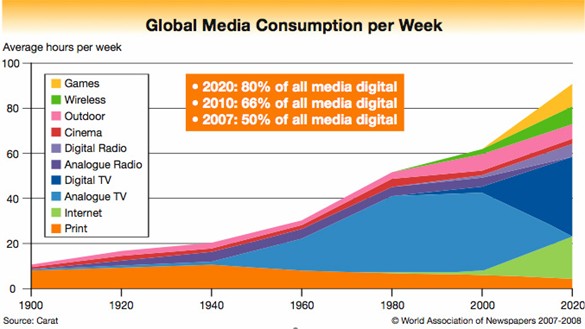I’ve seen the point made across a variety of articles that media companies see media consumption as being zero sum - there’s only a fixed amount of consumption that people have and they’re allocating it between a variety of options. The typical example is people abandoning legacy television for YouTube. Thus, the rationale goes, the time people would have spent watching television has been replaced by them watching YouTube.
I understand the concern. People are watching less and less standard television with only time sensitive and restricted content (ie sports) being viewed on television but there’s a world of nuance. People may be watching less and less broadcast television but the content that’s being consumed is growing. Cordcutters pride themselves on not paying for cable television yet they’re still subscribing to Netflix and Hulu. The same shows are being watched - just not on the usual devices. In addition, there’s the rise of multi-screen consumption - we’ll be on our phones or laptops while watching TV. Whether it’s a distraction from a commercial, a way to follow an event on Twitter, or just browsing Wikipedia to get a bit more information, we’re parallelizing our media consumption and increasing the size of the media pie rather than solely switching between platforms.
I found the following graphic which highlights the shift in media consumption over the past century.
Part has been the rise of new technology to fill in more and more of our days. Radio gave way to the rise of television which started taking up more and more of our time. The internet then came along and gave us another way to access and consume content that. The smartphone blew that out of the water and gave us the internet and media consumption wherever we are. Whereas in the past we’d be watching TV or using the internet at home or at the office with smartphones we can consume content wherever we are. The pie of “total available media consumption minutes” has been growing over time and will only keep increasing. What will people do when we’re being chauffeured around by our self-driving cars? We’ll be using our future devices to consume and entertain ourselves the exact same way we do now. That’s a whole new timeslot for us to consume content that we’ve never had the ability to before.
As more and more of our responsibilities get automated that time will become available. Some will fill it in with creative pursuits while others will view it as another timeslot for media consumption on an ever increasing number of screens and devices. It’s definitely depressing but I’m not optimistic given recent trends.

